"AMD Radeon RX 9070: Performance Review"
The AMD Radeon RX 9070 enters the market at a peculiar time for graphics cards. With Nvidia's latest generation just launched, the Radeon RX 9070, priced at $549, directly competes with the underwhelming GeForce RTX 5070. In this head-to-head, AMD's new offering emerges as the clear winner, making it the go-to choice for 1440p gaming enthusiasts. However, the decision isn't as straightforward as it seems, primarily due to AMD's own pricing strategy. The Radeon RX 9070 is only $50 less than the superior Radeon RX 9070 XT. While the 9070 is about 8% slower and 9% cheaper than the 9070 XT, the small price difference might push buyers towards the XT for its better performance. Nonetheless, when choosing between these two AMD options, Team Red's prospects look promising.
Purchasing Guide
----------------The AMD Radeon RX 9070 is set to launch on March 6, with a starting price of $549. However, expect various models to be priced higher. For the best value, aim to purchase a model as close to the starting price as possible, especially considering its close pricing to the Radeon RX 9070 XT.
AMD Radeon RX 9070 – Photos
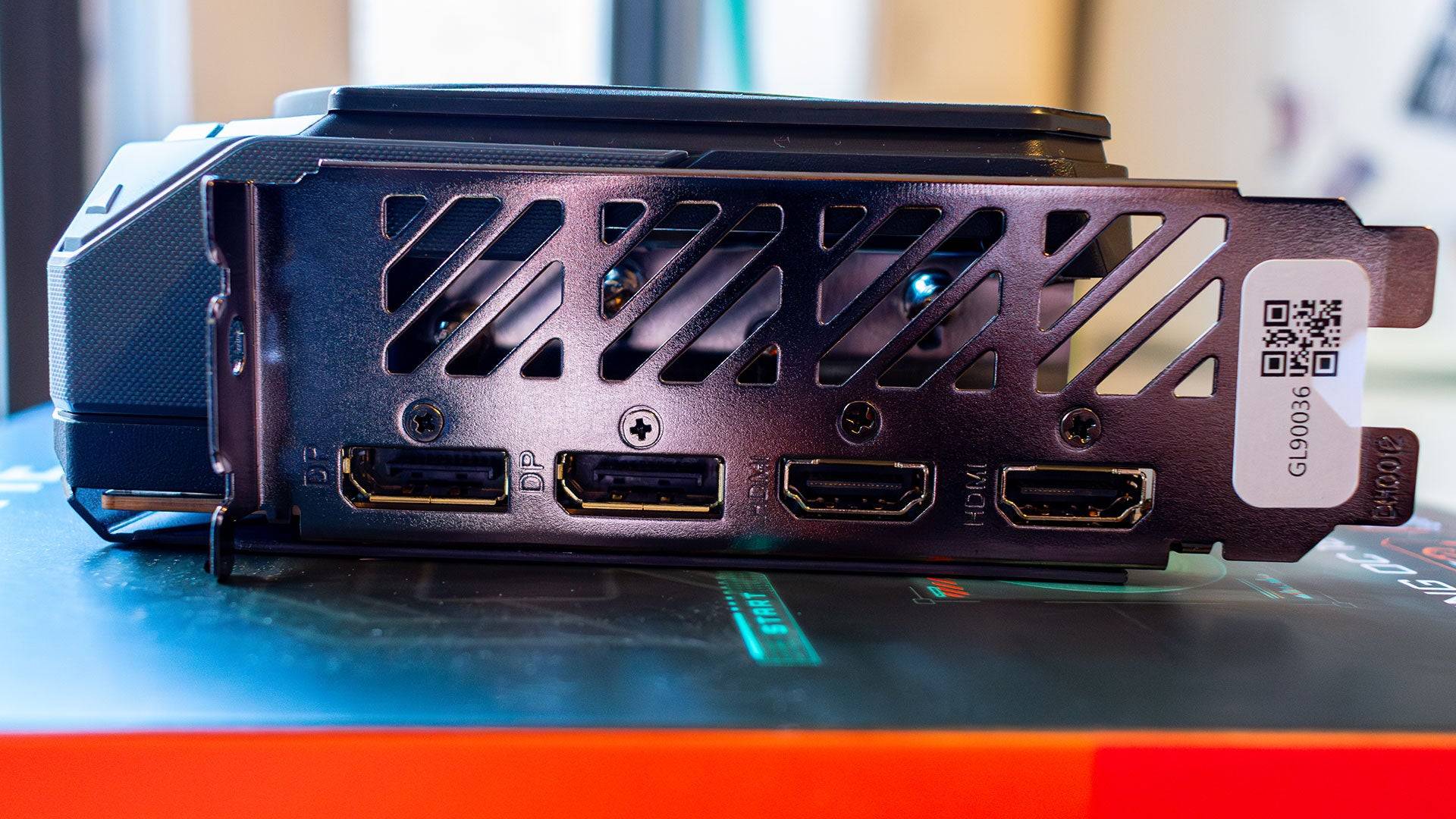
 4 Images
4 Images
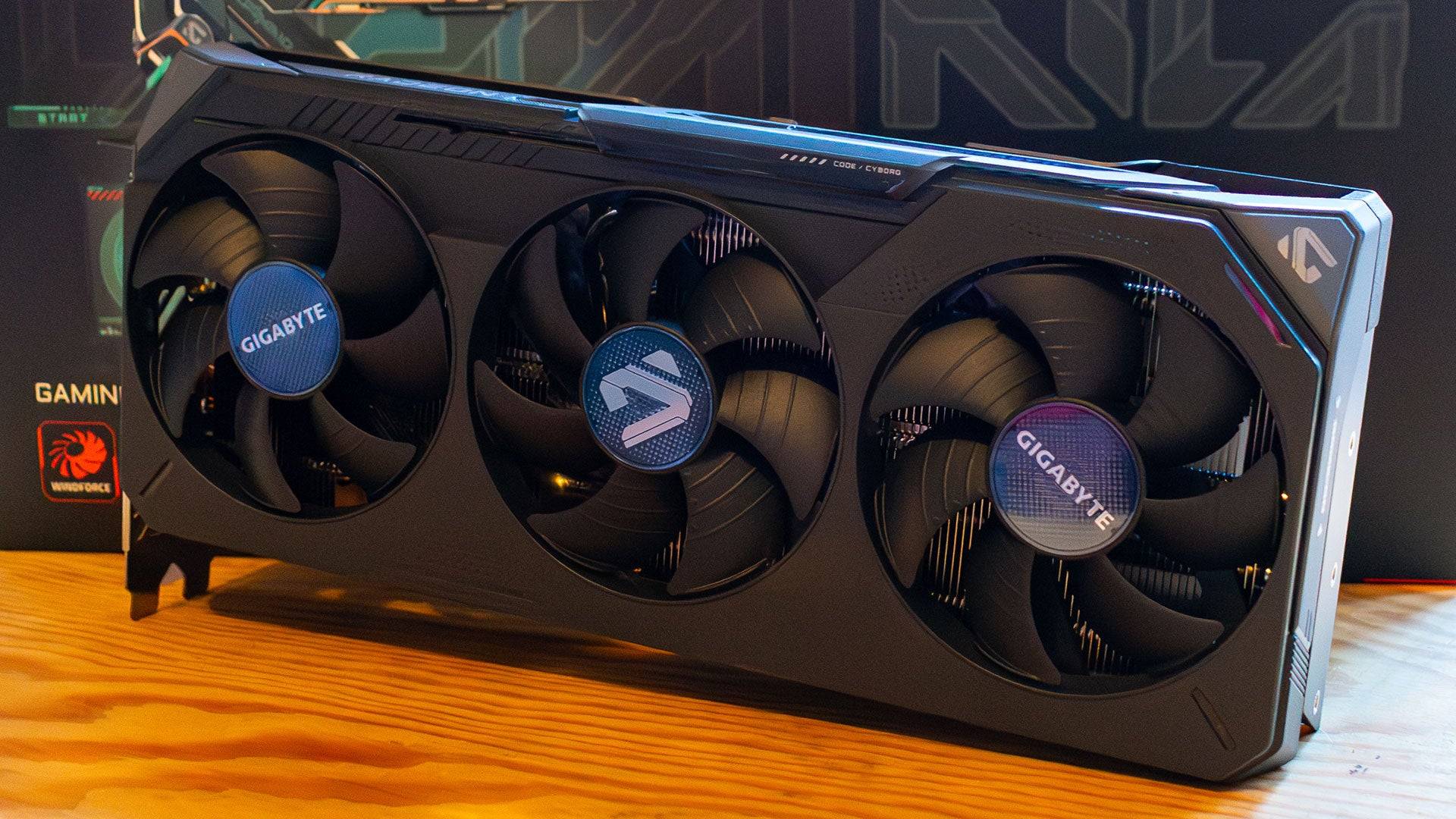
Specs and Features
------------------Like its sibling, the Radeon RX 9070 XT, the RX 9070 leverages the new RDNA 4 graphics architecture, which significantly boosts performance. Despite having 30% fewer compute units, the 9070 outperforms the last-gen Radeon RX 7900 GRE. It boasts 56 Compute Units, each with 64 Streaming Multiprocessors (SMs), totaling 3,584 shaders. Additionally, each compute unit includes one Ray Accelerator and two AI Accelerators, summing up to 56 and 112, respectively. These enhancements enable the RX 9070 to excel in ray tracing and introduce AMD's FidelityFX Super Resolution (FSR) 4, marking the debut of AI upscaling on AMD GPUs.
The RX 9070 comes equipped with 16GB of GDDR6 VRAM on a 256-bit bus, mirroring the 7900 GRE's memory setup, which is sufficient for 1440p gaming for years to come. Although GDDR7, as used by Nvidia, would have been a nice upgrade, it likely would have increased the price. AMD recommends a 550W power supply for the RX 9070, which has a 220W power budget. My tests showed a peak consumption of 249W, suggesting a 600W PSU for safety. Notably, AMD isn't releasing a reference design for the RX 9070; all versions will be from third-party manufacturers. I tested the Gigabyte Radeon RX 9070 Gaming OC 16G, a triple-slot card with a slight factory overclock.

FSR4
----Since the rise of DLSS in 2018, AI upscaling has been a game-changer for performance without sacrificing image quality, a feature once exclusive to Nvidia. FSR 4 brings this technology to AMD GPUs, using AI to upscale lower resolution images to native resolution, improving upon the temporal upscaling of FSR 3 by reducing artifacts like ghosting. However, FSR 4 incurs a slight performance hit compared to FSR 3. For example, in Call of Duty: Black Ops 6 at 1440p on the Extreme preset, FSR 3 yields 165 fps, while FSR 4 drops to 159 fps. Similarly, in Monster Hunter Wilds at 4K with ray tracing, the RX 9070 achieves 81 fps with FSR 3, but 76 fps with FSR 4. The Adrenalin software allows users to toggle between FSR 3 and FSR 4, choosing between better image quality or slightly higher performance based on their gaming needs.
AMD Radeon RX 9070 XT & 9070 – Benchmarks
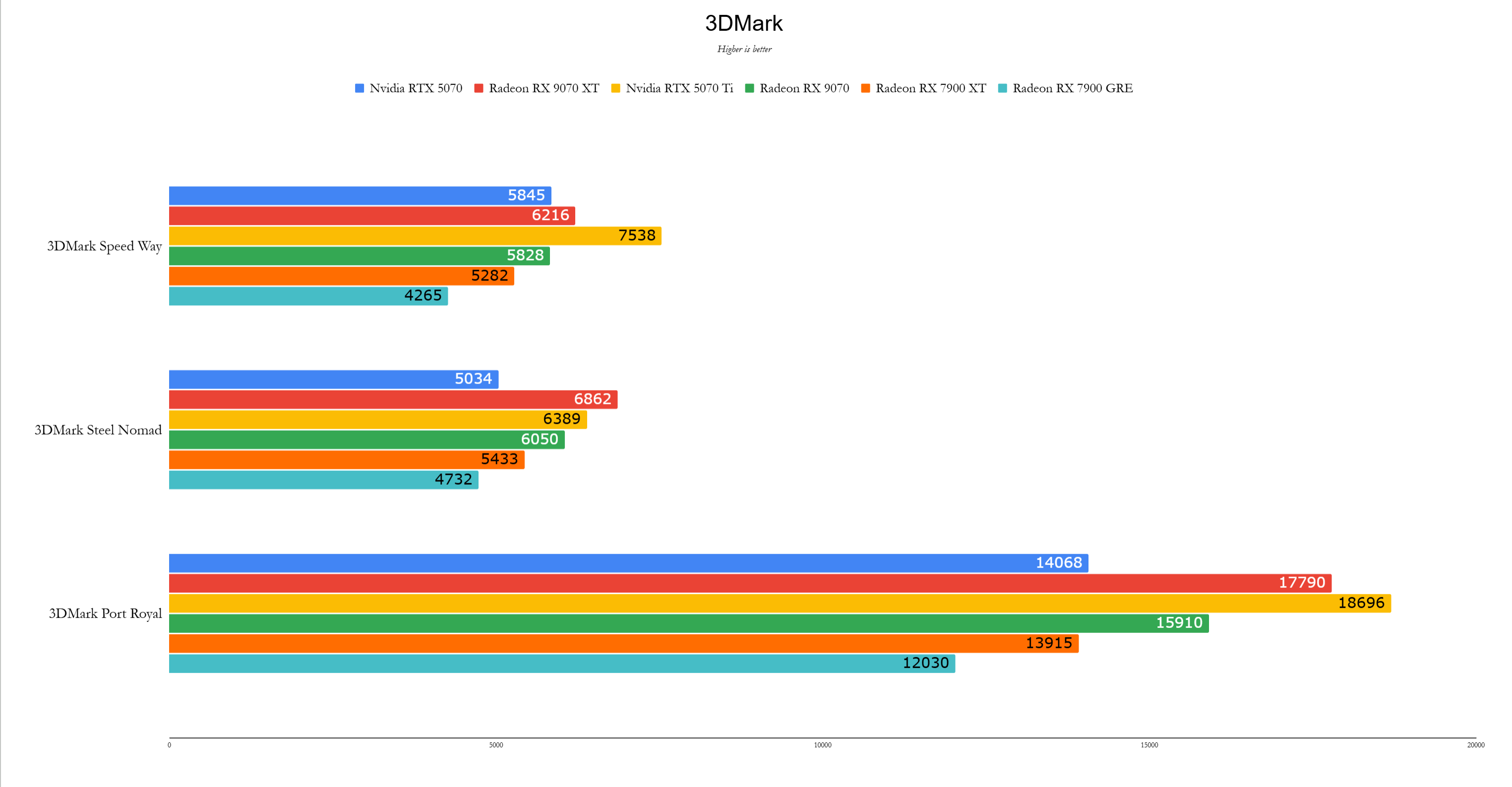
 11 Images
11 Images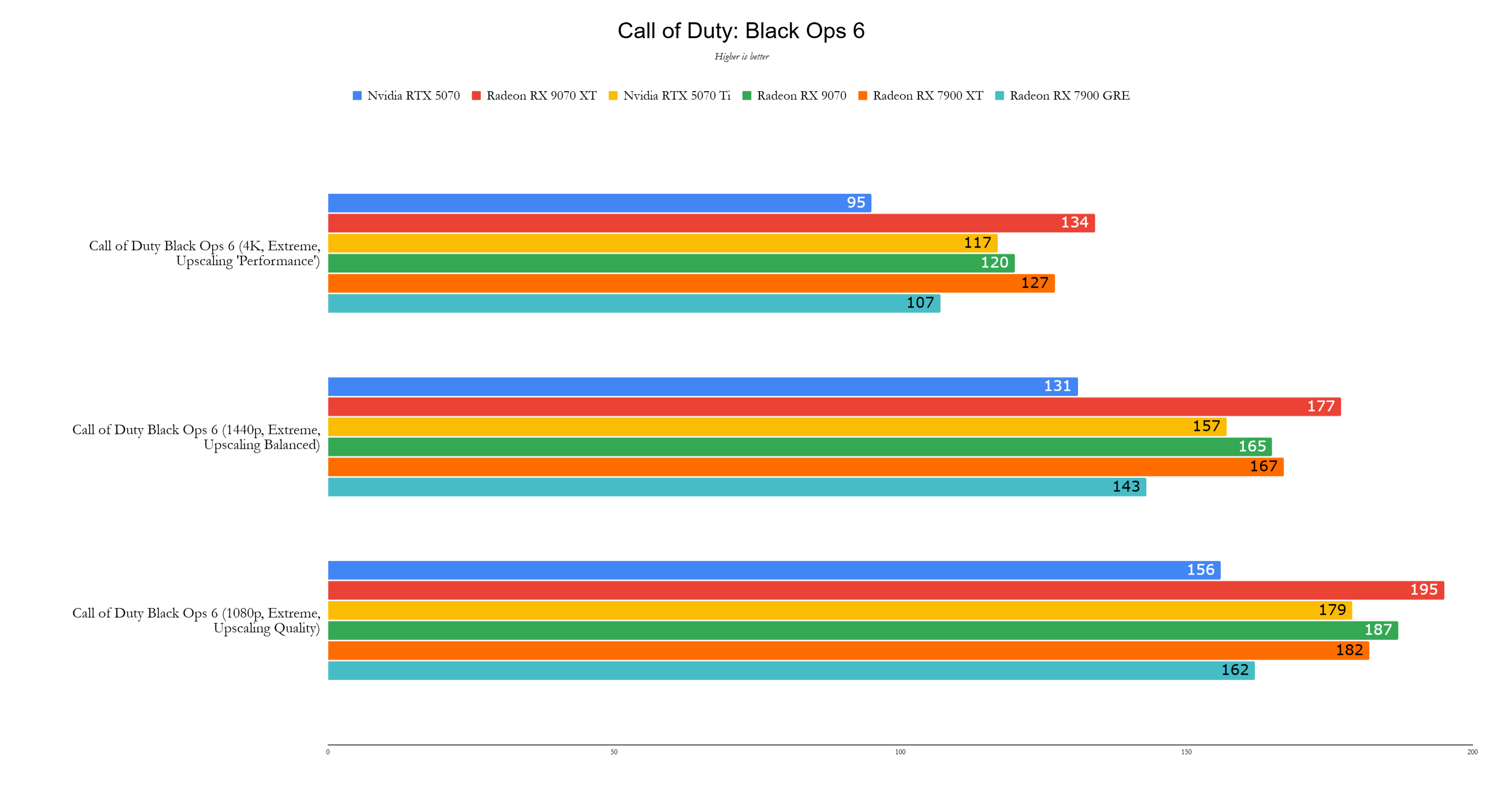
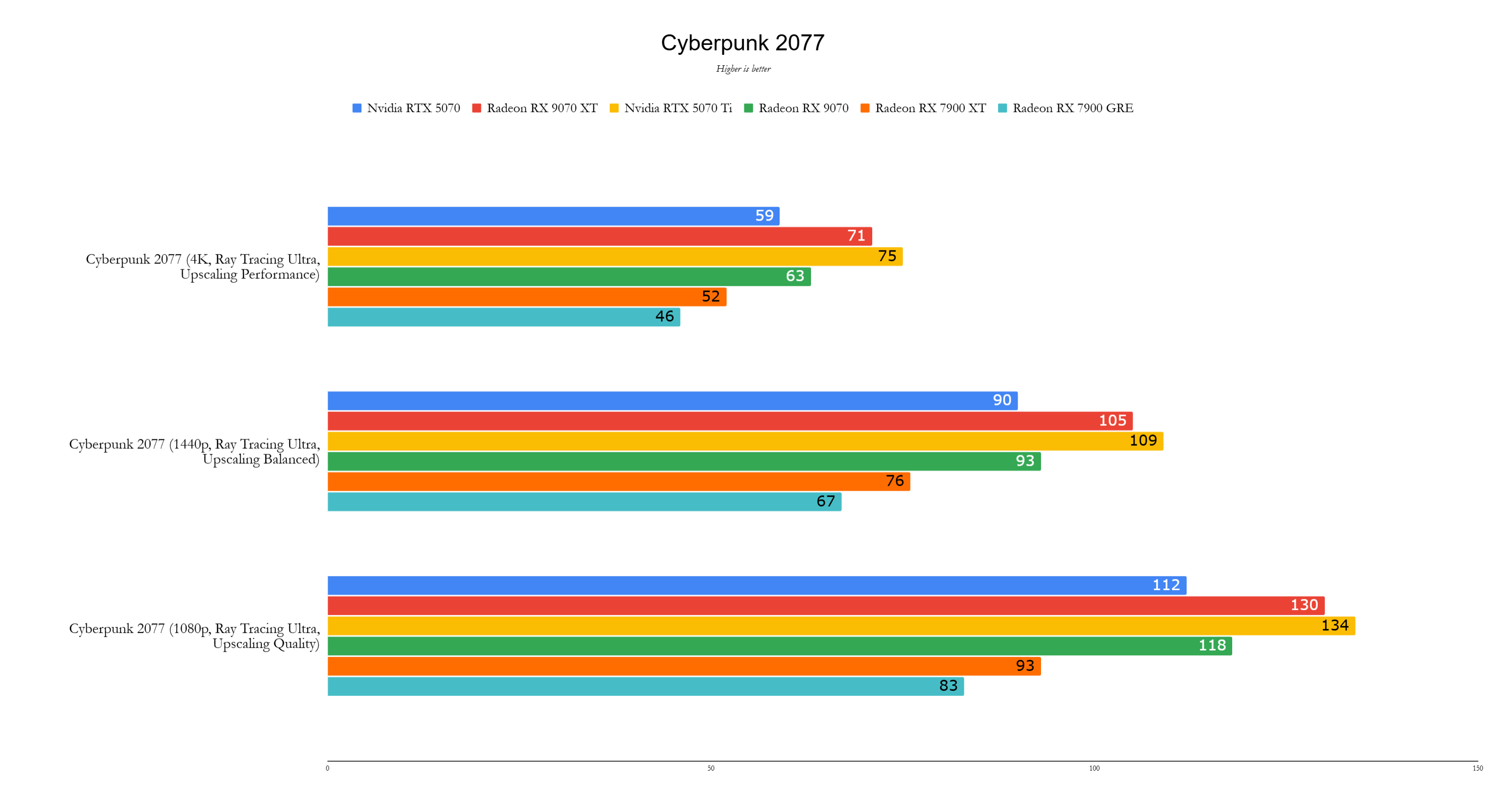
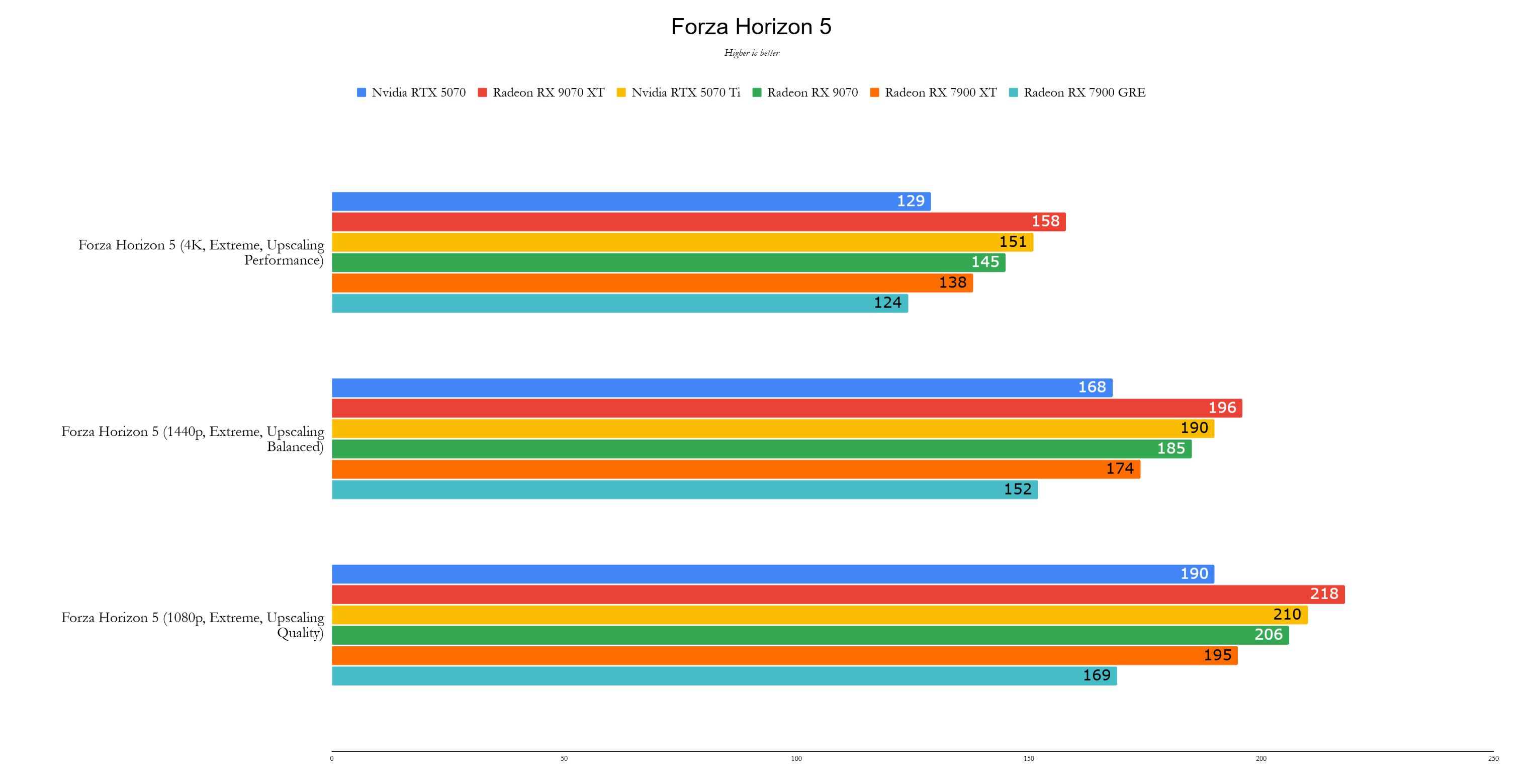
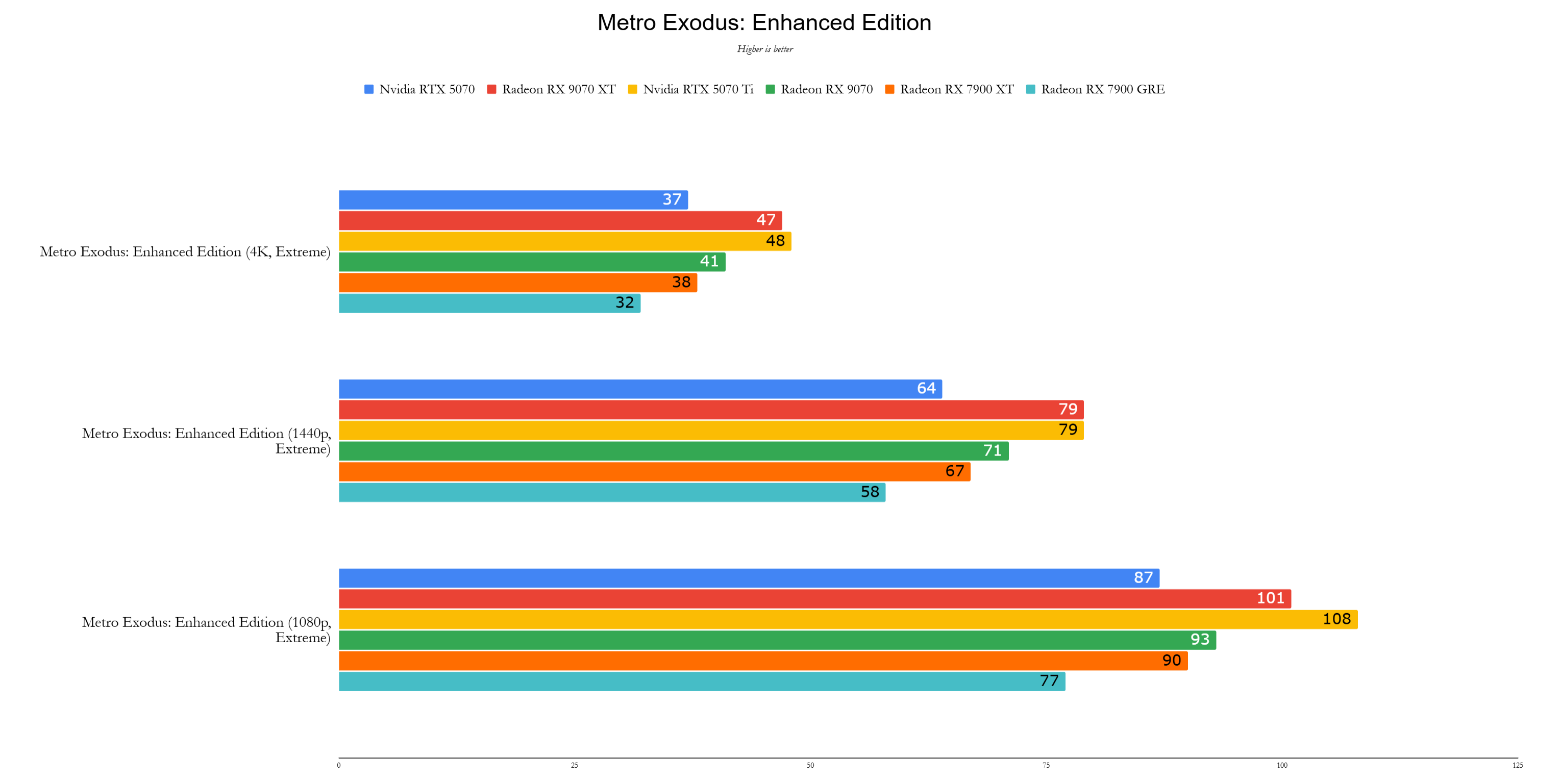
Performance
-----------Priced at $549, the AMD Radeon RX 9070 directly challenges the Nvidia GeForce RTX 5070 and frequently outperforms it. At 1440p, the RX 9070 is on average 12% faster than the RTX 5070 and 22% faster than its predecessor, the RX 7900 GRE, despite having 30% fewer cores. My testing involved a factory overclocked version, the Gigabyte Radeon RX 9070 Gaming OC, with a reported boost clock of 2,700Mhz, which should increase frame rates by about 4-5%.
All graphics cards were tested using their latest public drivers at the time of writing. In 3DMark's Speed Way test with ray tracing, the RX 9070 scored 5,828 points, nearly matching the RTX 5070's 5,845. In the Steel Nomad test without ray tracing, the RX 9070 significantly outperformed the RTX 5070, scoring 6,050 to 5,034.
In Call of Duty: Black Ops 6 at 1440p with FSR 3 set to Balanced, the RX 9070 achieved 165 fps, compared to 131 fps from the RTX 5070 and 143 fps from the RX 7900 GRE. In Cyberpunk 2077 at 1440p with Ray Tracing Ultra, the RX 9070 slightly outperformed the RTX 5070 by 3%. Metro Exodus, tested without upscaling, saw the RX 9070 averaging 71 fps, 11% higher than the RTX 5070's 64 fps. Red Dead Redemption 2 at 1440p using Vulkan showed the RX 9070 leading with 142 fps against the RTX 5070's 115 fps.
In Total War: Warhammer 3 at 4K, the RX 9070 had a significant lead, but at 1440p, it was neck-and-neck with the RTX 5070. Assassin's Creed Mirage at 1440p with the Ultra preset and FSR set to Balanced saw the RX 9070 achieving 193 fps, 18% higher than the RTX 5070's 163 fps. Black Myth Wukong at 1440p was a close call, with the RX 9070 at 67 fps and the RTX 5070 at 66 fps. Forza Horizon 5 at 1440p showed the RX 9070 averaging 185 fps, compared to 168 fps from the RTX 5070 and 152 fps from the RX 7900 GRE.
The Radeon RX 9070's launch timing against the RTX 5070 plays to AMD's advantage. Both cards are priced at $549, but the RX 9070's superior performance and 16GB of VRAM make it a better long-term investment, despite the RTX 5070's GDDR7 memory. The RX 9070's edge in performance and memory capacity makes it the smarter choice for gamers looking for value and longevity.
-
"AMD Ryzen 7 9800X3D: Top Gaming CPU Now Restocked on Amazon"
May 27,2025 -
Best Buy Unveils AMD Radeon RX 9070, 9070 XT Prebuilt Gaming PCs
Sep 16,2025 -
AMD Ryzen 9 9950X3D: Performance Analysis
May 20,2025 -
Best Deals on AMD Radeon RX 9070 and 9070 XT Prebuilt Gaming PCs Starting at $1350
Apr 21,2025 -
"AMD Zen 5 Gaming CPUs Restocked: 9950X3D, 9900X3D, 9800X3D Available Now"
May 25,2025 -
Amazon Just Dropped the Price on This AMD Radeon RX 9070 XT Prebuilt Gaming PC
Apr 07,2025 -
Today's Top Deals: PS Portal, PS5 Controllers, AMD Ryzen X3D CPUs, iPad Air
Apr 03,2025 -
AMD Zen 5 9950X3D, 9900X3D, 9800X3D CPUs Now Available for Gaming
Mar 26,2025
-
1

Every Pokémon Game on the Nintendo Switch in 2025
Feb 25,2025
-
2
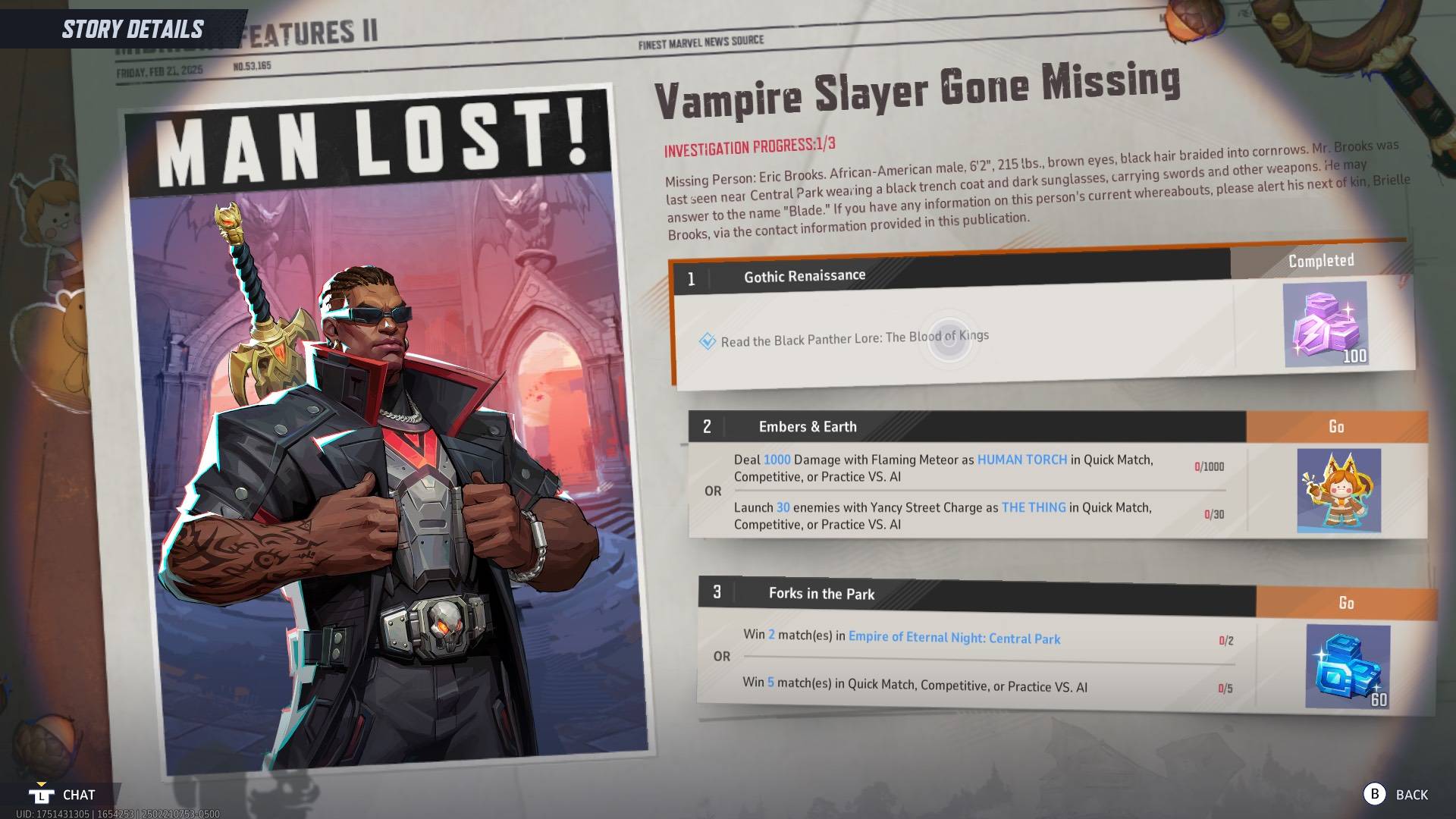
How To Read Black Panther Lore: The Blood of Kings in Marvel Rivals
Mar 01,2025
-
3
![Anime Vanguards Tier List – Best Units For Each Gamemode [UPDATE 3.0]](https://images.gzztb.com/uploads/35/17376012656791b0f12fa1c.jpg)
Anime Vanguards Tier List – Best Units For Each Gamemode [UPDATE 3.0]
Feb 27,2025
-
4
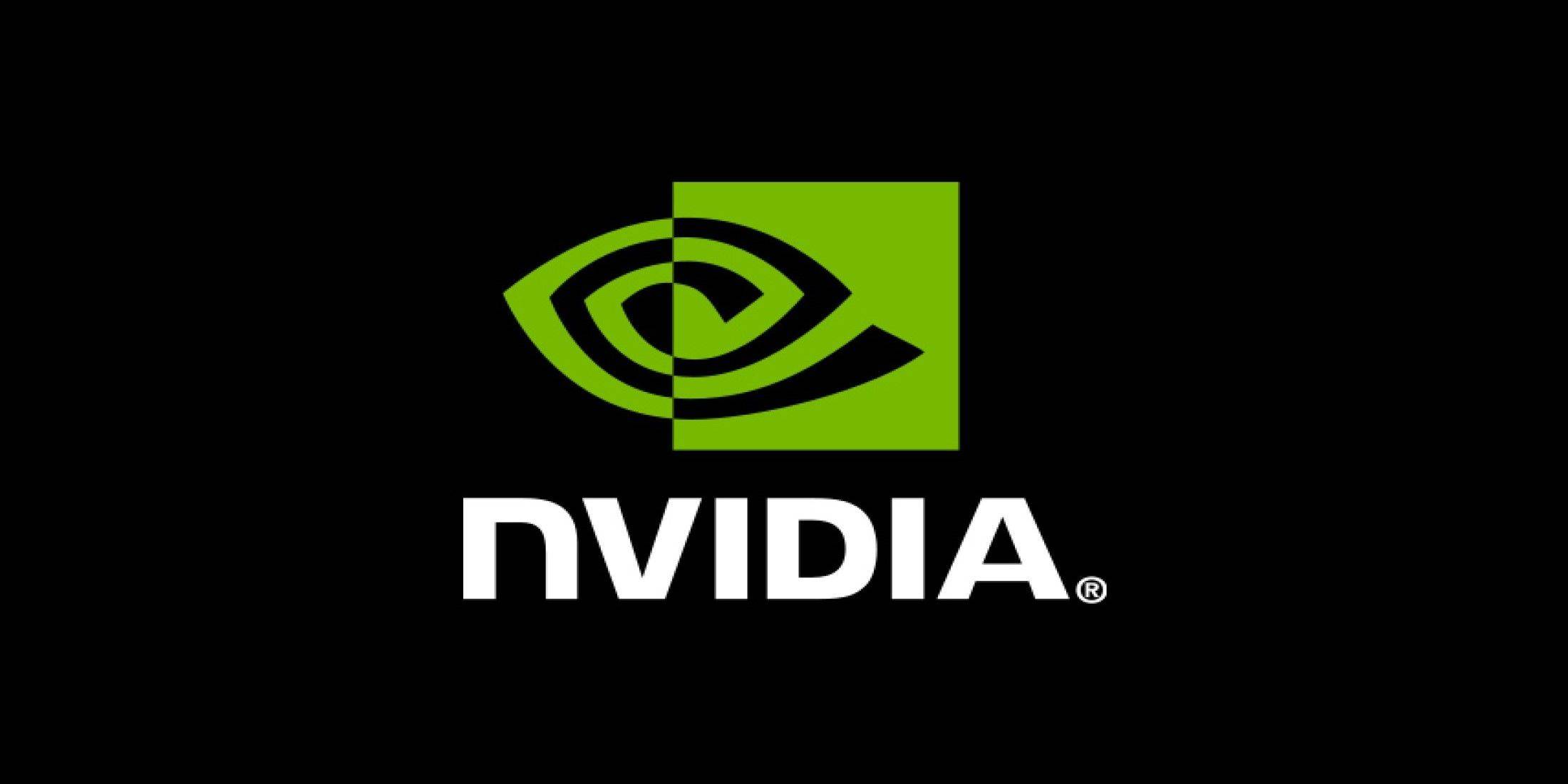
Nvidia RTX 5090 Specs Leak: Rumor Confirmed?
Mar 14,2025
-
5

Hearthstone has kicked off the Year of the Raptor with a myriad of new content
Mar 16,2025
-
6

Ragnarok X: Next Gen - Complete Enchantment Guide
May 25,2025
-
7
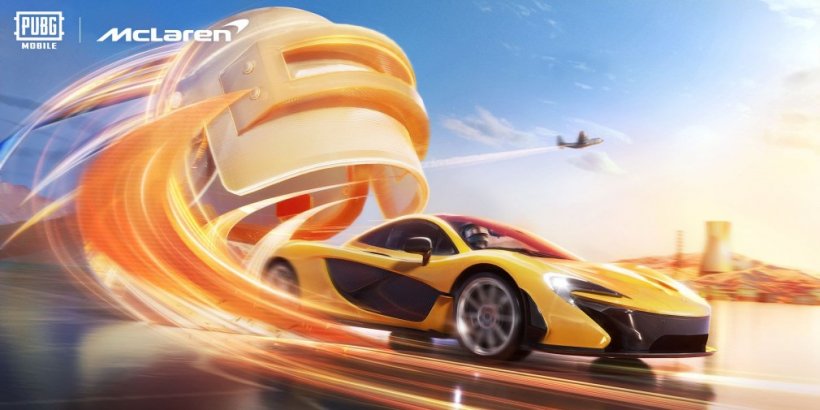
McLaren Returns to PUBG Mobile Collaboration
Aug 27,2024
-
8

January 15 Is Suddenly a Big Day for Call of Duty: Black Ops 6 Zombies Fans
Feb 20,2025
-
9

Assetto Corsa EVO Release Date and Time
Jan 05,2025
-
10

Where to Preorder the Samsung Galaxy S25 and S25 Ultra
Mar 06,2025
-
Download

DoorDash - Food Delivery
Lifestyle / 59.30M
Update: Apr 23,2025
-
Download

Niramare Quest
Casual / 626.43M
Update: Feb 21,2023
-
Download

The Golden Boy
Casual / 229.00M
Update: Dec 17,2024
-
4
POW
-
5
Gamer Struggles
-
6
Mother's Lesson : Mitsuko
-
7
Poly Pantheon Chapter One V 1.2
-
8
How To Raise A Happy Neet
-
9
Dictator – Rule the World
-
10
Strobe













